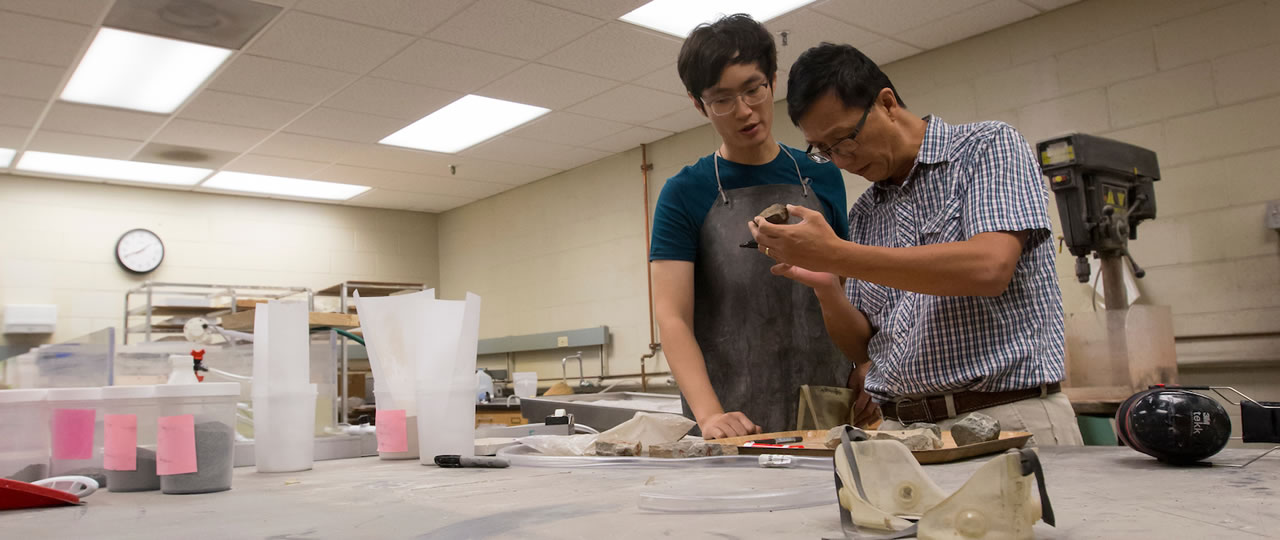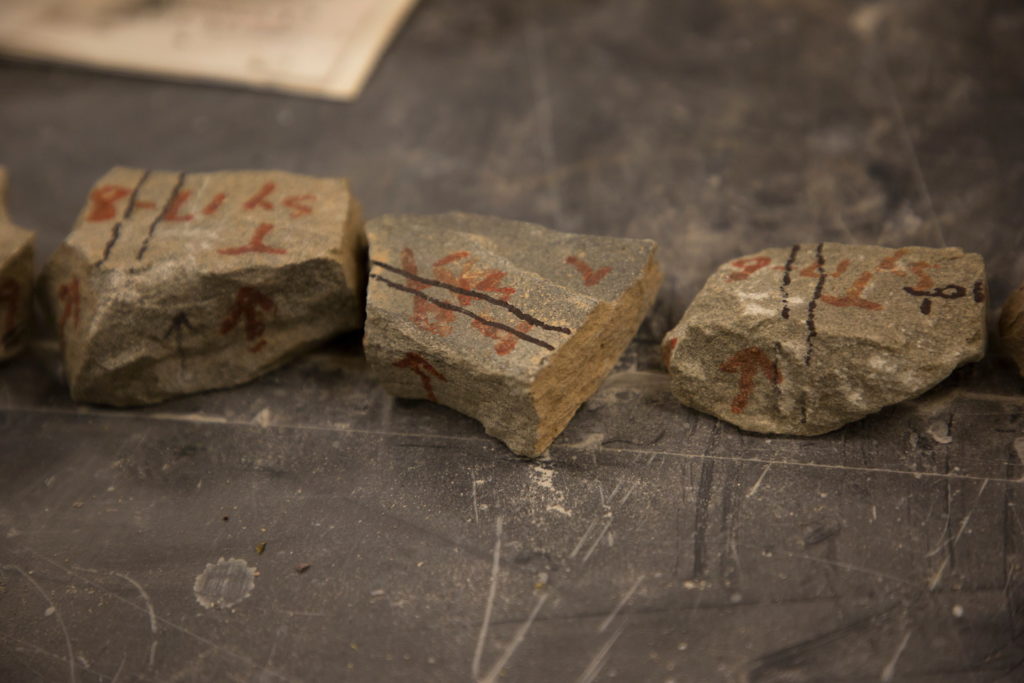Missouri S&T geologist leads $2.1M National Science Foundation research effort to study Earth’s greatest mass extinction
Posted by

Dr. Wan Yang shows his research student Ziyue Ju how to properly label and cut rock samples for analysis. Sam O’Keefe/Missouri S&T
Missouri S&T geologist Dr. Wan Yang has devoted his academic career to unlocking the mysteries of the Permian mass extinction more than 250 million years ago. That geological odyssey now finds him leading an 11-institution consortium that’s been collectively awarded a $2.1 million National Science Foundation research grant.
Each summer for the past 15 years, the associate professor of geology and geophysics at Missouri University of Science and Technology has collected rock samples that predate dinosaurs by millions of years in the high desert Bogda Mountains of northwest China, near the massive country’s borders with Kazakhstan, Mongolia and Russia. The Xingjiang Uygur autonomous region – which includes parts of the famed Silk Road trading route – is also the area where Yang was born.
The field sedimentologist and stratigrapher is the principal investigator for a collaboration that also involves scientists from Southern Methodist University; the University of Texas at Dallas; University of Washington; Boise State University; Colby College; Shandong University of Science and Technology in China; the University of Freiburg in Germany; the Nanjing Institute of Geology and Paleontology in China; the Institute of Vertebrate Paleontology and Paleoanthropology in Beijing, a branch of the Chinese Academy of Sciences; and two of our country’s most prominent natural history museums: the California Academy of Sciences in San Francisco and the Field Museum of Natural History in Chicago.
The research team will document the detailed evolution of land animals and plants before, during and after the extinction event and analyze evidence of ancient climatic, atmospheric, environmental, tectonic and other ecosystem changes to find the causes, timing and pace of the extinction and ensuing recovery.
The two science museums will assist with a public outreach effort that includes a series of education videos for “The Brain Scoop,” the Field Museum’s educational YouTube channel. Colby College in Maine and the UT Dallas will offer summer workshops for high school science teachers.
While the most well-known mass extinction occurred with the demise of dinosaurs at the end of the Cretaceous Period, the planet’s largest mass extinction happened approximately 251 million years ago at the end of the Permian Period, when more than 70 percent of the Earth’s land species vanished on the supercontinent Pangea.
Unlike the demise of marine life in that era, which is well-documented, the terrestrial track record is less known, Yang explains, with land records harder to preserve since they are exposed to the elements. The project will examine well-exposed sedimentary rock successions that formed in lakes, rivers and ancient soils, enabling a precise documentation of the sequence of events on land and an investigation of how terrestrial animals and plants responded to these changes.
The results will determine if extinctions on the continents occurred at the same time as those in the ocean and what conditions existed that may have caused such large-scale changes.
“The findings will provide critical insights into ongoing extinctions and the likelihood of similar global scale mass extinctions in the near future,” Yang notes. “A comprehensive, multidisciplinary investigation of critical intervals of Earth history offers the best insights into the conditions that prevailed before, during and after major biotic crises.”
Yang’s research team includes three paleontologists, a geochemist, geochronologist, paleomagnetist and ecosystems modeler. His share of the three-year NSF grant is $369,368.

1 am a former graduate of the UNIVERSITY OF MISSOURI-ROLLA, in geology ” earned my MSc,1972; PhD 1977″.
I was very pleased to know about this big research project , I was more pleased to know that Yang is leading this big research. I am sure it will have very important results for earth science in the coming years. My best wishes to Dr. Yang and his colleagues.
Congratulations Dr. Yang!
Congratulations Wan. Way to go.
Great news, and good luck. I presently volunteer at the NM Museum of Natural History & Science, and involved with the Friends of Paleontology @ the museum. Look forward to your findings.
P.S. Need volunteer help! Contact me!